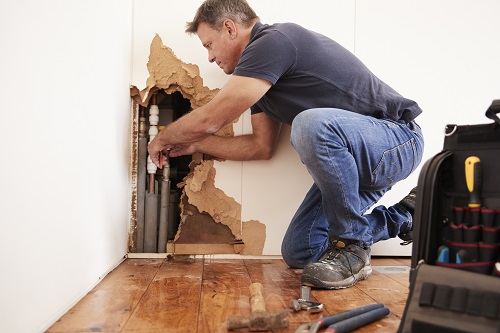Water damage can wreak havoc on your property, causing structural damage, mold growth, and potential health hazards. Understanding the importance of prompt restoration and seeking professional assistance is crucial to mitigate further damage and restore your property to its pre-loss condition. When faced with water damage, it’s essential to go to Restoration Pro, a trusted provider of comprehensive restoration services to get browse around here.
Introduction to Water Damage Restoration
A. Understanding Water Damage
Water damage refers to the destruction caused by water intrusion into a property, whether from burst pipes, flooding, or leaks. This damage can manifest in various forms, including structural deterioration, rotting wood, and microbial growth, posing significant risks to property and occupants.
B. Importance of Prompt Restoration
Prompt restoration is essential to mitigate the impact of water damage and prevent further deterioration of property and belongings. Delaying restoration efforts can exacerbate damage, leading to increased repair costs, mold growth, and potential health hazards for occupants.
C. Seeking Professional Assistance: Go to Restoration Pro
When faced with water damage, seeking professional assistance from Restoration Pro is paramount. Restoration Pro offers expertise, experience, and specialized equipment to assess, mitigate, and restore water damage effectively, ensuring a swift and thorough restoration process.
Stages of Water Damage Restoration
A. Assessment and Inspection
The first stage of water damage restoration involves a thorough assessment and inspection of the affected area. Restoration professionals assess the extent of the damage, identify potential hazards, and develop a tailored restoration plan to address the specific needs of the property.
B. Water Extraction and Drying
Once the assessment is complete, restoration professionals proceed with water extraction and drying. Specialized equipment such as pumps, extractors, and dehumidifiers are used to remove standing water and moisture from the property, preventing further damage and mold growth.
C. Dehumidification and Restoration
After water extraction, dehumidification and restoration efforts begin. Restoration professionals employ advanced techniques to eliminate residual moisture, restore structural integrity, and salvage affected materials. This stage may also involve repairs, reconstruction, and mold remediation as needed.
Common Techniques Used in Water Damage Restoration
A. Moisture Detection and Measurement
Effective moisture detection and measurement are critical in water damage restoration. Restoration professionals utilize moisture meters, infrared cameras, and hygrometers to identify hidden moisture pockets, assess moisture levels, and monitor the drying process accurately.
B. Structural Drying Techniques
Structural drying techniques are employed to remove moisture from building materials and prevent structural damage. Restoration professionals utilize air movers, dehumidifiers, and drying mats to facilitate airflow, expedite drying, and restore the structural integrity of the property.
C. Mold Remediation and Prevention
Mold remediation and prevention are integral parts of water damage restoration. Restoration professionals employ specialized techniques such as HEPA vacuuming, antimicrobial treatments, and moisture control to eliminate mold growth and prevent future mold infestations.
Benefits of Hiring Professionals for Water Damage Restoration
A. Expertise and Experience
Restoration professionals possess the expertise and experience necessary to handle water damage effectively. They understand the complexities of water damage restoration, adhere to industry standards and regulations, and employ proven techniques to ensure thorough and efficient restoration.
B. Efficient Restoration Process
Hiring professionals for water damage restoration ensures a swift and efficient restoration process. Restoration professionals have access to specialized equipment and resources, allowing them to expedite the restoration process and minimize downtime, disruption, and inconvenience for property owners.
C. Comprehensive Solutions and Peace of Mind
Professionals for water damage restoration offer comprehensive solutions and peace of mind to property owners. From assessment and mitigation to restoration and reconstruction, restoration professionals handle every aspect of the restoration process, providing reassurance and ensuring a successful outcome.
Preventive Measures to Mitigate Water Damage Risks
A. Regular Maintenance and Inspection
Regular maintenance and inspection of plumbing systems, appliances, and roofing can help mitigate water damage risks. Property owners should conduct routine inspections, address any issues promptly, and implement preventive maintenance measures to prevent water damage.
B. Adequate Drainage Systems
Proper drainage systems are essential to redirect water away from the property and prevent flooding and water intrusion. Property owners should ensure that gutters, downspouts, and drainage channels are clear, functional, and properly maintained to mitigate water damage risks.
C. Proper Storage and Protection
Proper storage and protection of valuables and sensitive items can help minimize water damage risks. Property owners should store valuable belongings on elevated surfaces, invest in waterproof containers, and implement protective measures such as sump pumps and backflow preventers to safeguard against water damage.
In conclusion, water damage restoration is a complex and multifaceted process that requires prompt action and professional expertise. When faced with water damage, it’s essential to go to Restoration Pro, a trusted provider of comprehensive restoration services. By understanding the stages of water damage restoration, common techniques used, and the benefits of hiring professionals, property owners can mitigate further damage and restore their property to its pre-loss condition effectively. Additionally, implementing preventive measures to mitigate water damage risks can help property owners minimize the likelihood of future water damage incidents and ensure the long-term integrity of their property.



